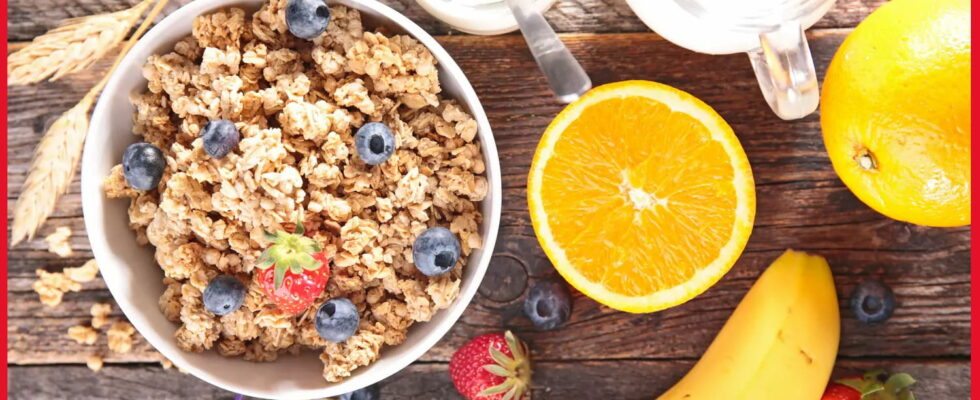While it’s clear that brioche covered in chocolate spread isn’t the ideal breakfast food for your health, other foods that seem healthier aren’t without their flaws.
What to eat for breakfast? Many French people ask themselves the question about this meal which seems very important to start the day. It is preferable that it is balanced and not too sweet, but it must still give energy in the morning. The consumer association Consommation Logement Cadre de Vie (CLCV) has thus shared a study to assess the quality of certain breakfast foods. She has looked in particular at products that are presented as healthy and assures that one should be wary of appearances.
To conduct its survey, the association used data from the Food Observatory (Oqali), jointly implemented by the French National Agency for Food, Environmental and Occupational Health Safety (Anses) and the French National Research Institute for Agriculture, Food and the Environment (INRAE). Data published in a report on the “crispy and soft planning” (sic) sector. 12 brands were taken into account, such as Aldi, Auchan, Carrefour, Franprix, Lidl, Intermarché, etc.
The association compared plain rusks from different brands, a product that consumers tend to consider relatively healthy. In reality, the Nutri-Score is sometimes not displayed and, above all, is not necessarily good, sometimes reaching level E. In the sample studied, the Nutri-Score is only displayed in 57% of cases. This can perhaps be explained by the fact that 67% of these products are actually between C and E. For crackers that often appear harmless, the Nutri-Score reaches 50% of D. Some therefore have “mediocre nutritional profiles”.

In addition, many brands available in supermarkets promote products with “no added sugar”, “no additives” or “no preservatives”. The association then inspected a packet of brioches displayed “no additives”. However, it contains plant extracts with coloring power, i.e. hidden additives. 69% of the references studied contain additives and similar substances.
While the association notes that some recipes have improved in recent years, particularly with the removal of palm oil, these changes have sometimes been made to the detriment of other, nonetheless healthy, components. For example, in some whole wheat toasts, the association has noted a removal of palm oil and a reduction in the amount of sugar, but this has led to a 70% reduction in the proportion of whole wheat flour, which is nevertheless rich in fibre.
The CLCV thus encourages manufacturers to indicate the Nutri-Score more systematically. Conversely, it advises against using claims boasting a positive aspect such as “low in salt” or “source of fiber” on products that have a very low Nutri-Score (D or E). It is not easy for consumers to quickly judge products that appear very similar to each other, so they need simple and clear indications and not to be subjected to the “health marketing” denounced by the association.
